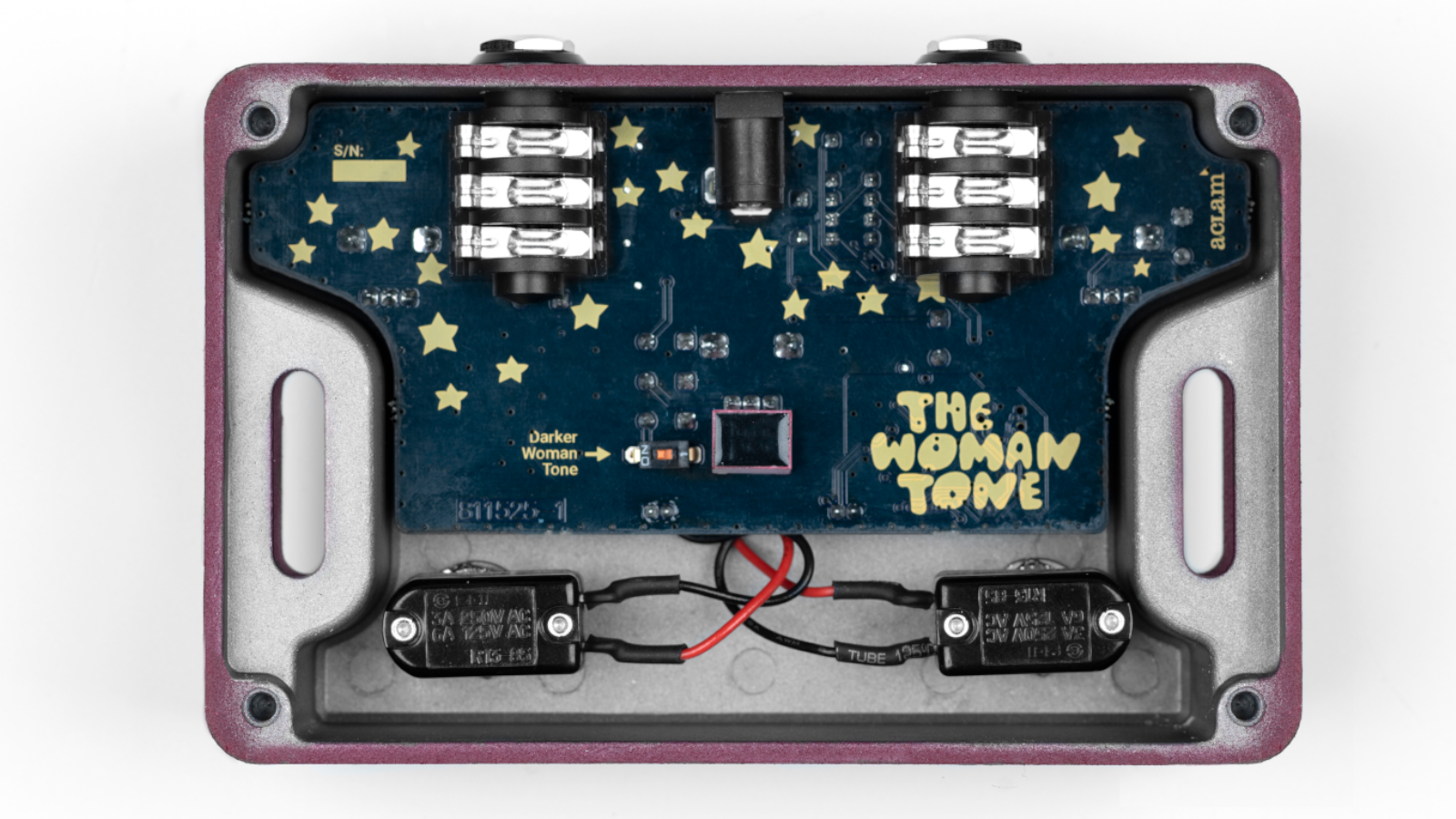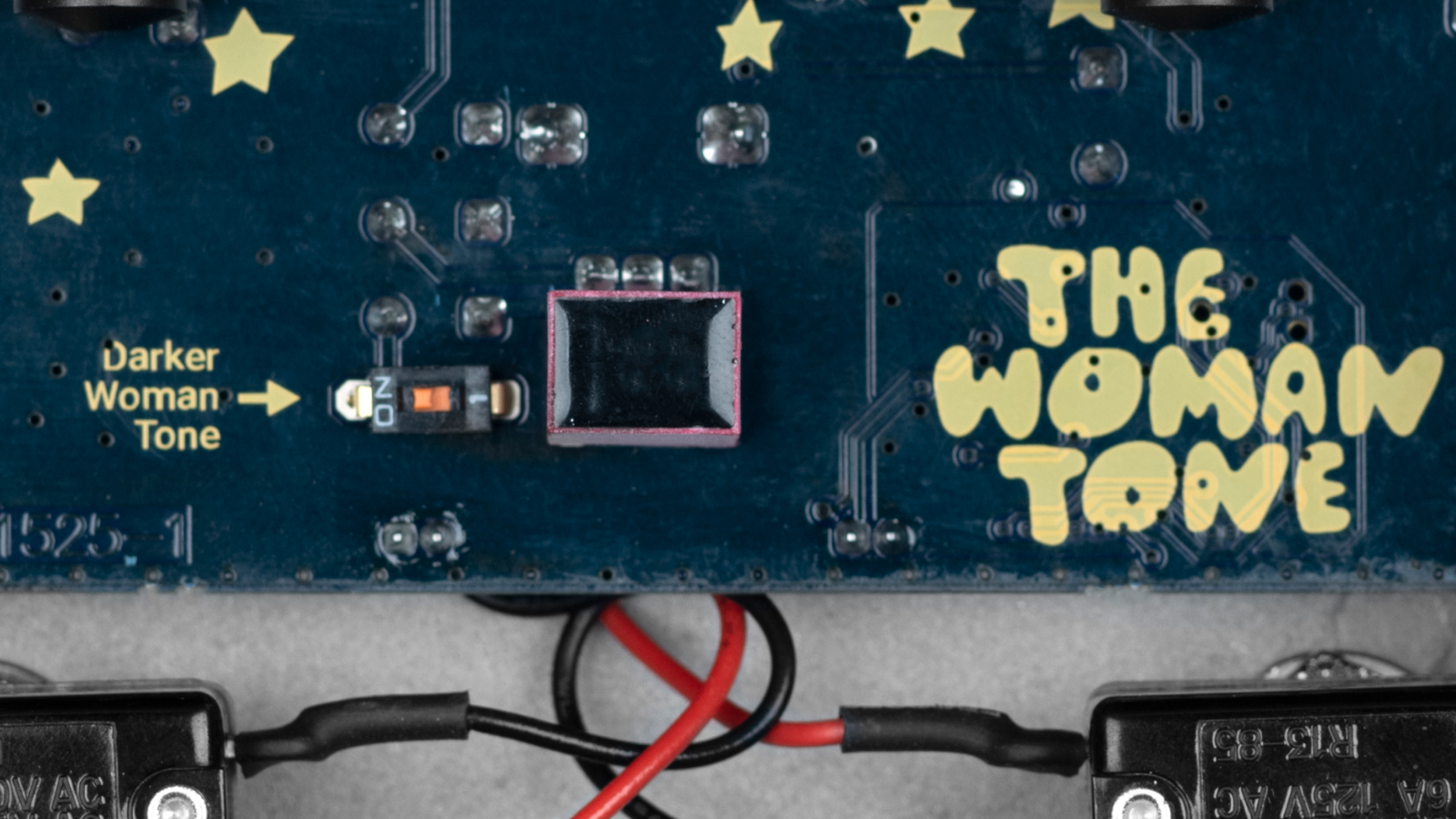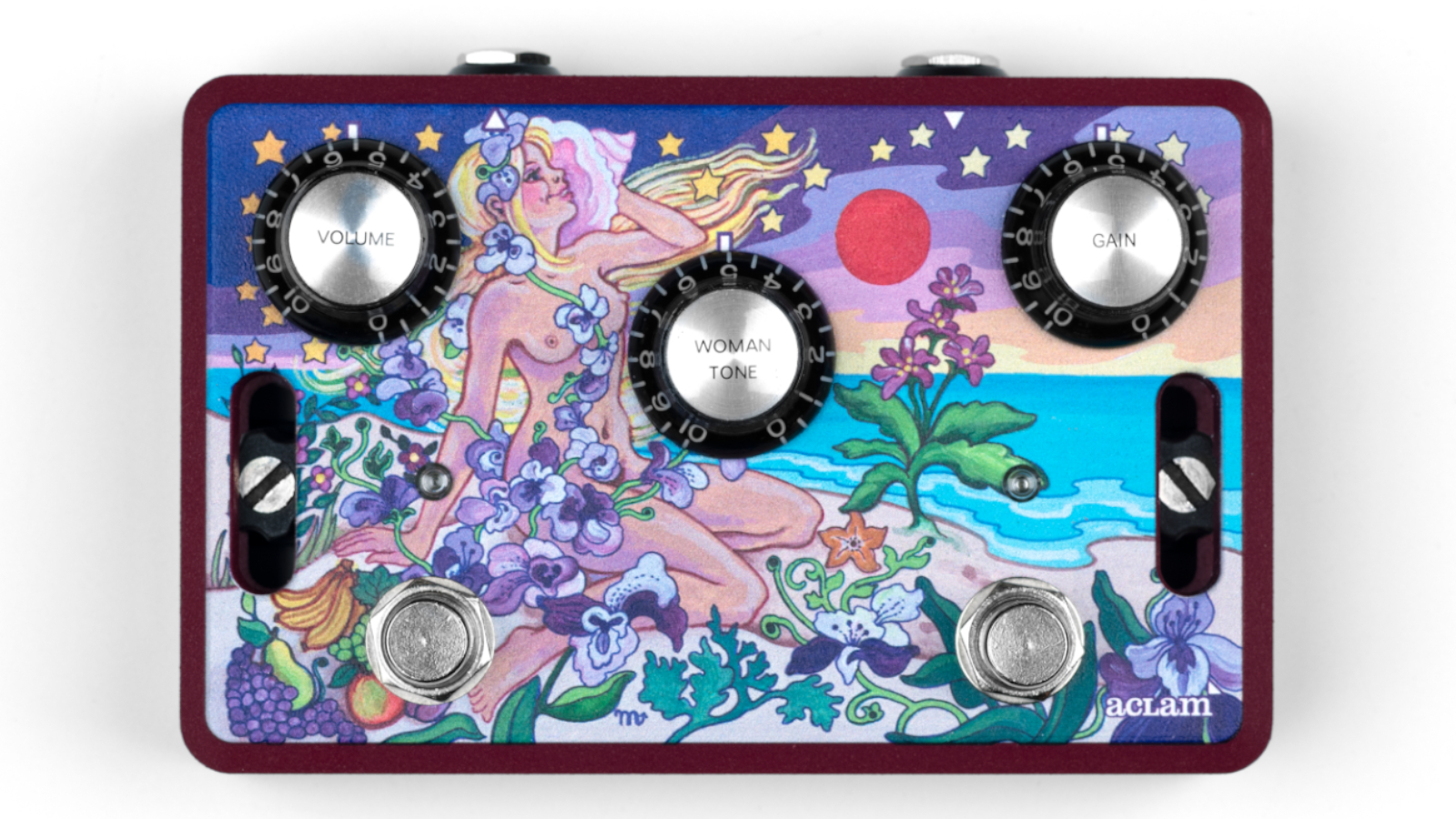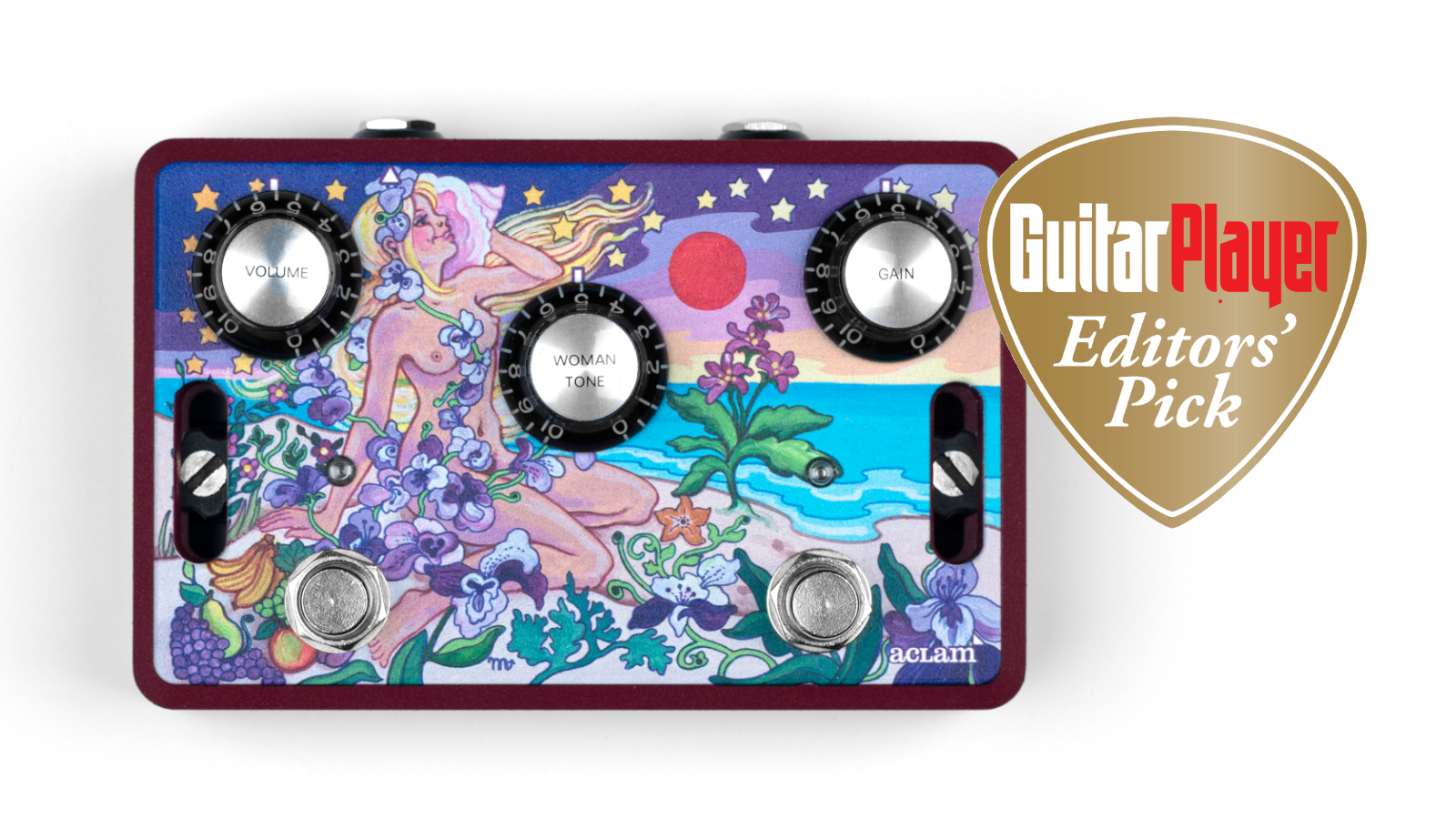GuitarPlayer Verdict
A great-sounding and versatile overdrive that makes achieving classic-rock sounds a breeze
Pros
- +
Well-designed
- +
Well-built
- +
Offers toothsome overdrive tones
- +
Easy access to the hallowed “woman tone”
Cons
- -
Some may find it pricey for what it does
You can trust Guitar Player.
As the name implies, Aclam’s product designers were inspired by Eric Clapton’s legendary Cream-era “woman tone” to create the Spanish company’s latest release, and the result promises an impressive shortcut to that sound.
But I feel it’s also important to say up front that this product shouldn’t be written off by players uninterested in chasing Clapton’s Gibson SG-into-Marshall Super Lead sounds of more than half a century ago.
The truth is, if you just need an extremely well-built Marshall-in-a-box (MIAB) overdrive for any situation in the broad range of rock sonic stylings – one that also happens to carry a nifty bonus feature – read on.
Based in Barcelona, Spain, Aclam was founded as a guitar-accessory maker around 10 years ago, and segued into high-quality, boutique-grade effects pedals shortly after that.
As such, the Woman Tone is housed in an extremely rugged custom box that hints at another of the company’s products: the Smart Track pedalboard and pedal-locking system it introduced in 2018 [reviewed in GP Holiday 2018], with easy-access fasteners built into slots at each side of the housing to eliminate the need for Velcro or Dual Lock.
Otherwise, it’s simply a handsome pedal by any measure, with custom Gibson-style black top-hat knobs, and graphics designed by Marijke Koger, the former leader of the Dutch art collective The Fool, which famously painted Clapton’s SG.

As many guitarists already know, Clapton achieved his “woman tone” by rolling down his guitar’s tone control, but this only produces the correct throaty, silky, vocal tone when injected into a cranked Marshall or a suitable fuzz, overdrive or distortion pedal capable of evoking that sound.
All the latest guitar news, interviews, lessons, reviews, deals and more, direct to your inbox!
In that respect, it’s best to approach it as a straight-up, Plexi-voiced overdrive first and foremost.
The controls include gain and volume, plus an overdrive on/off foot-switch to the right side of the enclosure, with its own LED indicator.
Added to these are the eponymous Woman Tone control between the other two knobs, plus the Woman Tone on/off switch to the left of the enclosure, which is only functional when the overdrive effect itself is on.

In addition, a dip switch inside the pedal can be turned on for a darker tone, if you desire it.
The input and output are on the pedal’s front face, with a center-negative nine-volt DC power jack between them.
Aclam explains that the pedal’s Woman Tone control responds equally well to a range of pickup types thanks to a “custom pickup simulation circuit” that emulates the response of a vintage humbucker.
I tested the Woman Tone pedal with a Gibson 1959 Les Paul Reissue and an early ’60s-style Fender Stratocaster into a tweed Deluxe-style 1x12 combo and a Friedman Dirty Shirley Mini amp head and 2x12 cab.
I truly dug the pedal from several perspectives.
First off, as hinted at above, this is simply a great-sounding overdrive pedal by any measure. The voicing is certainly in the cranked-vintage-Marshall ballpark, but that’s a broad and extremely versatile crunch and lead tone for many genres and playing styles anyway.
Setting aside the woman tone feature, the pedal makes achieving classic-rock sounds a breeze. But the pedal is also dynamic and expressive when applied to other styles as well, adapting to everything from roots and alt to indie and other more-contemporary gain-ramping needs.

The gain control offers a usable range, from mild dirt to floored-tube amp mayhem, and the volume control packs a real punch and can drive an amp hard, so I mostly kept it below the halfway point.
As for the Woman Tone setting, it takes you straight to the stated destination, delivering a round, fluty, singing tone that can be strangely inspiring in a variety of musical settings.
Just as it’s achieved with most electric guitars, full-on woman tone is best attained here by rolling the Woman Tone knob all the way down, although some players might find subtler gradients that are useful to them. (I also found the factory preset preferable to the darker tone available from the internal switch, but your tastes might vary.)

As for the elephant in the room: Yes, you can achieve the same thing in most instances by rolling down your guitar’s tone knob, but the Woman Tone pedal delivers it at the stomp of a switch, without taking your right hand from its picking position.
It may also offer other benefits to players seeking to achieve the sound with their guitars set to middle-position pickup selections, or those with shared tone controls, and so forth.
Even if you consider its eponymous leftward foot switch and related knob a mere bonus, it’s a great-sounding and versatile overdrive that deserves an Editors’ Pick Award.

Specifications:
- CONTROLS: Gain, Woman Tone, volume. Foot-switches for pedal on/off and Woman Tone
- EXTRAS: True-bypass switching, LED indicator for each foot-switch. Center-negative 9VDC adaptor input
- SIZE: 5.25” x 3.25” x 1.875” (excluding feet and knobs)
- BUILT: Assembled in Spain
Visit Aclam for more information.
Dave Hunter is a writer and consulting editor for Guitar Player magazine. His prolific output as author includes Fender 75 Years, The Guitar Amp Handbook, The British Amp Invasion, Ultimate Star Guitars, Guitar Effects Pedals, The Guitar Pickup Handbook, The Fender Telecaster and several other titles. Hunter is a former editor of The Guitar Magazine (UK), and a contributor to Vintage Guitar, Premier Guitar, The Connoisseur and other publications. A contributing essayist to the United States Library of Congress National Recording Preservation Board’s Permanent Archive, he lives in Kittery, ME, with his wife and their two children and fronts the bands A Different Engine and The Stereo Field.


